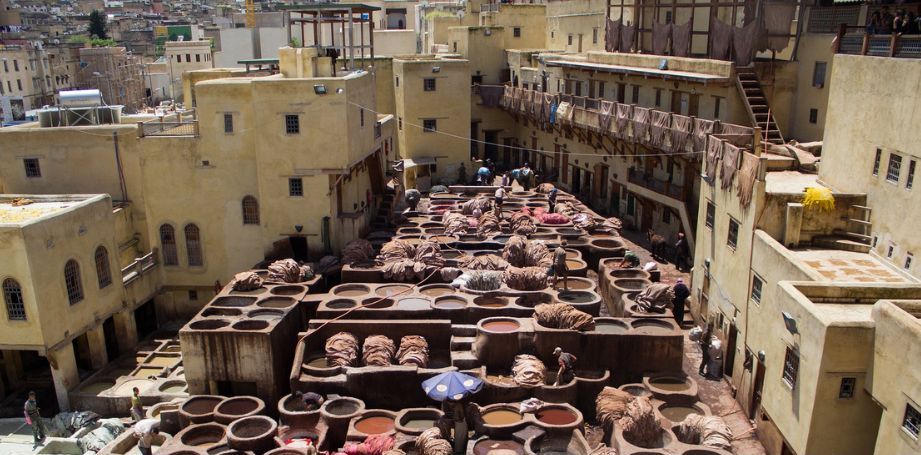
Medinas, Mosques and Madrasas – The Imperial Cities of Morocco
Rabat, Marrakesh, Fez and Meknes are the four imperial cities of Morocco. The palaces, madrasas, mosques and medinas of these four exotic cities will take visitors on an extraordinary journey through the history of Morocco…

The Imperial City of Rabat
Rabat is the current capital of Morocco and rests along the shores of the Bouregreg River and the Atlantic Ocean. Famous monuments include the majestic Hassan Tower, the Mausoleum of King Mohammed V and the compound of the Royal Palace — the residence of King Mohamed VI. The picturesque Kasbah of the Udayas, a Berber-era royal fort, is surrounded by formal French-designed gardens and overlooks the ocean.
Not far from the city walls stand the imposing walls of the Chellah, an ancient necropolis dating from the Roman through to the Islamic periods. These UNESCO-listed ruins are a favourite haunt for bird-watchers. Rabat medina is an intricate network of streets and souks where you can haggle for typical souvenirs such as hijabs, slippers, rugs and lamps.

The Imperial City of Marrakesh
Sheltered by the Atlas Mountains and once the capital city from 1071 to 1244, modern Marrakesh is an economic centre and home to mosques, palaces and gardens. Within the high red walls of the medina, a UNESCO World Heritage Site, you will find Jamaa El Fna Square filled with snake charmers, fortune tellers, acrobats, fire eaters and musicians. We recommend sitting in one of the many rooftop cafes to sip a cup of Moroccan mint tea while taking in the views of the square with the exquisite tiled minaret of the 12th century Koutoubia mosque dominating the skyline.
The city is home to the largest traditional souk in the country where you can barter for Berber carpets, spices, elaborate jewellery and other unique handicrafts. The Marjorelle Gardens are the work of painter Jacques Majorelle and are home to tropical gardens full of cacti, palms and ferns, as well as a museum dedicated to Berber artistry. Also worth visiting is Medersa of Ben Youssef, the Koranic university; Bahia Palace with its grand marble courtyard and opulent salons; and Koubba, Marrakesh’s oldest standing monument dating back to the 12th century.

The Imperial City of Fez
Many people consider Fez to be the cultural capital of Morocco. The oldest of the imperial cities, it was founded in the 8th century and has been the capital city several times throughout the history of Morocco. The oldest part of the city is Fes EL Bali — the largest living medieval medina with more than 80 thousand houses. Entry to this car-free UNESCO-listed area is via the famous Blue Gate or Bab Boujeloud. Within the ancient walls you will find medieval Marinid architecture, vibrant souks and religious schools (madrasas) such as the 14th century Bou Inania and Al Attarine, both decorated with elaborate cedar carvings and ornate tile work. The medina is also a centre of traditional trade crafts such as intricate wood carving, zellige tilework, pungent smelling tanneries and hand-wrought metalsmithing.
Fez El Jedid – also known as New Fez even though it dates back to the 13th century — is occupied mainly by the Royal Palace and also contains the Jewish Quarter.

The Imperial City of Meknes
Laid-back Meknes is the most peaceful and authentic of the imperial cities. The UNESCO-listed medina invites you to wander the narrow pastel-coloured streets and shop for bargains in the souks. Bab Mansour, the gateway into the medina, is one of the masterpieces of Hispano-Moorish art and boasts beautiful arches and mosaic tiling. Explore the courtyards and fountains of the Mausoleum of Sultan Moulay Ismail, who made the city his capital in the 17th century and modelled it on the image of Versailles. To the south, you will find ruined Heri es-Souani, the vast imperial stables which once held 12,000 horses.
Our client, Exclusive Voyages, creates customised exceptional experiences in Morocco to suit every type of traveller. Contact us today to find out more…




